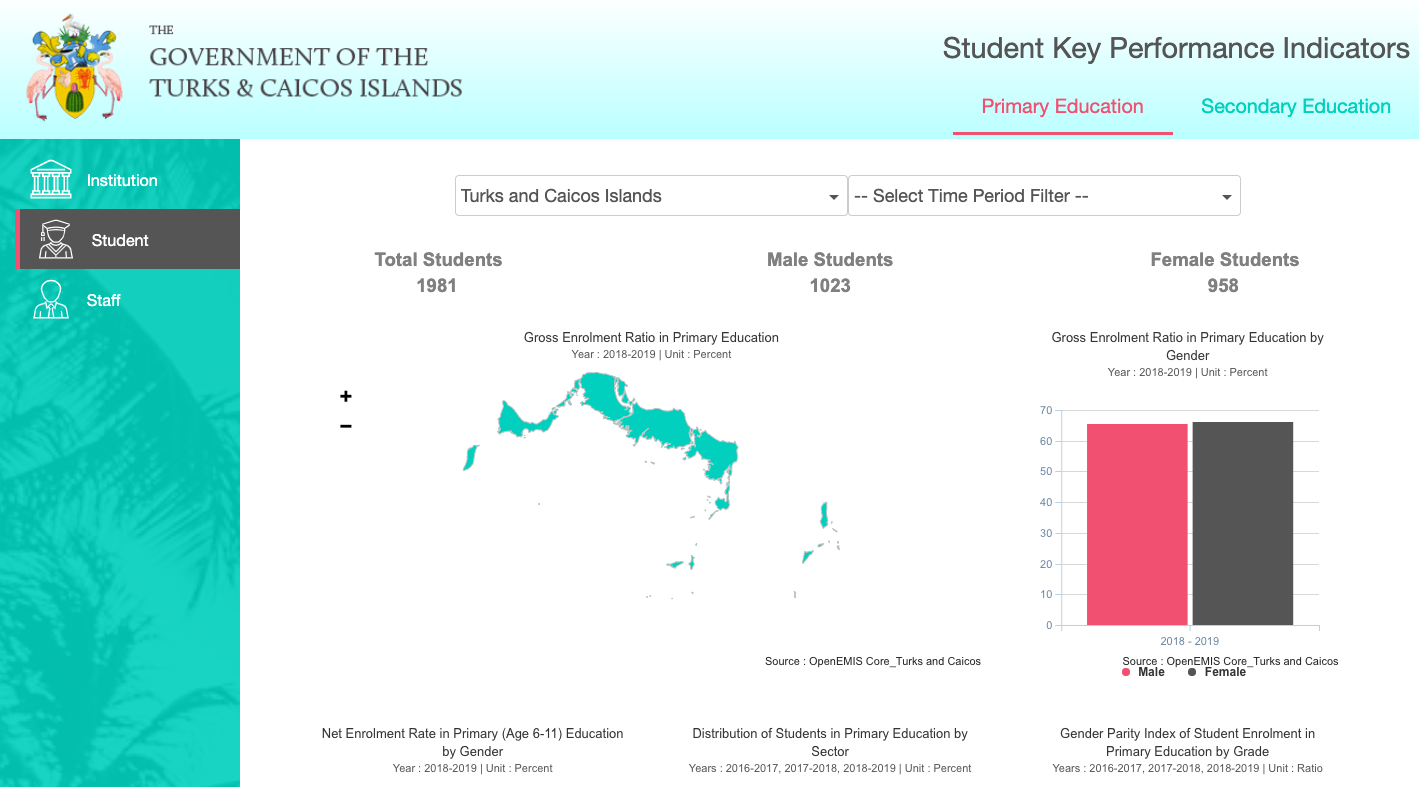|
Sumer Drall, Intern, Community Systems Foundation Sunmin Lee, Senior Programme Advisor/Data Analyst, Community Systems Foundation From 8-12 July 2019, representatives from the Ministry of Education, Youth, Sports and Library Services, Turks and Caicos Islands participated in a week-long OpenEMIS Lab training in New York City. The Advanced Lab Training focused on Data Analytics, supporting the Ministry in developing measurable objectives, Key Performance Indicators (KPIs) and dashboards to track progress and goals. The aim of the training session was to assist country teams in producing indicators to measure the impact and progress of the education sector and to inform policy planners to make better data driven decisions. The trainings highlighted key features of OpenEMIS tools, such as importing external sources of data and defining indicators via OpenEMIS DataManager; extracting transactional data from client’s database, transforming into meaning indicators, and loading back to OpenEMIS Data Warehouse for further analysis through OpenEMIS Integrator and OpenEMIS DataManager. Furthermore, the training also focused on the creation of online interactive dashboards using OpenEMIS Dashboard to visualize and disseminate the ministries data . Eugene A. Grant, Education Officer, and Diandra Gray, Assistant Education Planning & Policy Officer, from the Ministry of Education, Youth, Sports and Library Services who attended the training, strongly agreed that the experience has improved their understanding in not only collecting but also using the OpenEMIS data. Ms. Gray shared that, “During [the OpenEMIS Advanced Lab Trainings], we learned that the system is much more [comprehensive] than just using the OpenEMIS Core'' (1). Screenshot from the OpenEMIS Turks and Caicos Islands dashboard With regards to the changes in education data collection methods after using the OpenEMIS system, Mr. Grant mentioned that, “Before OpenEMIS, we had to rely on Excel spreadsheets and had to request information from the school that had to be then compiled into spreadsheets manually. With OpenEMIS, we do not need to request information [from individual schools]. We can now, at the Ministry level, pull up the information once it has been entered in the OpenEMIS interface by the schools. We also now understand that with the OpenEMIS DataManager and OpenEMIS Integrator, we can support decision making since there is a lot of analyzing capability in the system that can be utilized.’’ The OpenEMIS , when appropriately utilized by educational institutions, not only facilitates the process of entering data but also minimizes the risk of losing data. Ms.Gray supported this statement by comparing the experience of public schools utilizing the OpenEMIS and private schools not currently on the system. She noted that, “Private schools can, at times, miss putting a row or tab in Excel spreadsheets, but public schools are inputting information that the Ministry needs straight into the OpenEMIS system.’’ Regarding the training itself, Ms.Gray stated that the training exposed her to components of the system that allow her to utilize several analytical methods, such as aggregating student data for analysis in the platform itself. Emphasizing Ms. Gray’s comments, Mr. Grant noted that, “There are many steps to consider.” Both participants acknowledged that the training is an important step in truly understanding the capabilities of the OpenEMIS system. Mr. Grant appreciated the trainings, as he recognizes, “What OpenEMIS can do and what can be done with it.” He also acknowledges that there will be, “a lot of practice and trial and error to really learn the system.’ (1.) OpenEMIS Core is used to collect student, staff and institution data. The OpenEMIS toolkit contains software modules to support collection, management and use of data.
0 Comments
Leave a Reply. |
Join the CSF data revolution webinar tomorrow!
COMMUNITY SYSTEMS FOUNDATION – EST 1963
+1 212 500 1335
data-driven sustainable development


